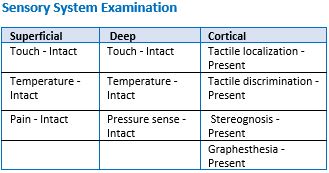Ayurvedic management of Parkinson’s disease - A Case Study
Keywords:
Parkinson’s Disease, Kampavata, Snehana, Swedana, Rajayapana Basti.Abstract
Parkinson’s disease is defined as Chronic, progressive neurodegenerative disease characterized by both motor and non-motor features. The most important signs and symptoms of Parkinson’s disease occur when the nerve cells in basal ganglia, an area of brain that controls the movement become impaired or die. When these neurons die or get impaired, they tend to produce less amount of important chemical in the brain called as Dopamine which causes various symptoms like Tremors, Rigidity in muscles, Akinesia and postural disability associated with various Cognitive, Behavioural and other Psychological symptoms. In Ayurveda presentations of this disease can be corelated with the Kampavata in which both Sarvanga Kampa and Shiro Kampa are important Lakshanas that are seen. The Vata that is responsible for controlling the various functions of the body is responsible for causing the disease Kampavata and hence Kampavata is also mentioned in 80 types of Nanatmaja Vikaras. The Chala Guna of the Vata is pathologically increased leading to the Kampa. Treatment mainly aims at reversing the imbalance of Vata Dushti through various Shamana and Shodhana Chikitsa, Here a case of 58 year old female presenting with the symptoms of Severe Tremors, Postural instability and difficulty in performing daily activities who was provisionally diagnosed as Kampavata was successfully treated with Snehana and Brihmana line of management in the form of Sarvanga Abhyanga, Shali Pinda Swedana and Rajayapana Basti.
Downloads
References
Anthony S Fauci, Eugene Braundwald, Dennis L. Kasper, Stephen L. Hauser, Dan L. Longo, J. Larry Jameson, Joseph Loscalzo. Harrison’s Principles of Internal Medicine. 17th edition. volume 2. Published by McGraw Hill. 2008. Pg no.2554.
https://www.frontiersin.org/articles/10.3389/fneur.2021.681413/full
https://www.parkinson.org/understanding-parkinsons/statistics
Agnivesha, Charaka, Chakrapanidatta, Sootrasthana, Chapter Maharogadhyaya, Verse 11 In:YT Acharya (Edi.). Reprint Edition 2015, Varanasi, Chaukambha Orientalia. p.113.
Madhavakara. Madhava Nidanam edited by Yadunandana Upadhyaya, Vol-1. Chukhambha Prakashana, Varanasi. Pg-494.
Vaidyavarashree Basavaraj, Basavarajeeyam, Sri Govardhana Sharma, editor.1st ed. Vatavyadhi Nidana Lakshana Chikitsa, Chapter 6. Nagpur: Gorakshana Yantralaya Publication; 1978p. 100-101.
Vinay Choudhary, Shaizi Layeek, Mayank Bhatkoti,. Clinical Evaluation of Rajayapana Basti administered by Classical Putaka method and Drip method in Parkinson’s disease. Journal of Ayurveda and Hol Med (JAHM). 2016; 4(2):3-15.
Agnivesha, Charaka, Chakrapanidatta, Chikitsasthana, Chapter Vatavyadhi Chikitsitam, Verse 75, In:YT Acharya (Edi.). Reprint Edition 2015, Varanasi Chaukambha Orientalia, p 620.
Vagbhata, Arunadatta, Hemadri, Dinacharya Vidhi Adhyaya, Verse 08, In:Harisadashiva shastry Paradkar bhishagacharya (Edi.) Ashtanga hrudaya with Sarvanga Sundara and Ayurveda Rasayana Commentary, Reprint Edition 2019, Varanasi Chaukambha surabharathi prakashana, p.26.
Swamy, V. K., M. Goud, K., Deshpande, S., M J, S., & K.N, V. (2017). Role of Panchakarma in Parkinson’s disease - a case study. International Journal of Ayurveda and Pharma Research, 5(8). Retrieved fromhttps://ijapr.in/index.php/ijapr/article/view/731
Agnivesha, Charaka, Chakrapanidatta, Siddisthana, Chapter Uttarabasti Siddi Adhyaya, Verse 16, In:YT Acharya (Edi.). Reprint Edition 2015, Varanasi Chaukambha Orientalia, p.731.
Vrddha Vagbhata, Shashilekha, Siddisthana, Siddi Basti Kalpa Adhyaya, Verse 24 In: Acharya Astanga samgraha samhita with Shashilekha Sanskrit commentary. Reprint Edition: 2019. Varanasi: Choukambha Sanskrit Series office p.605.
J.L.N.Sastry; Dravyaguna Vijnana Foreword by Prof K.C.Chunekar. volume II; Chaukhambha Orientalia, Varanasi, 2012; Pg.176.















